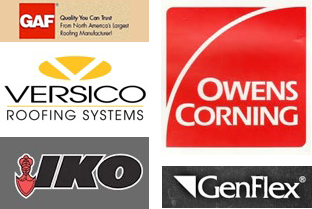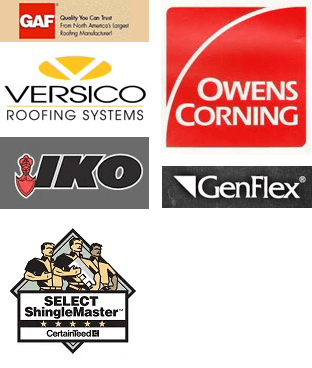When it comes to roofing projects, safety should be a top priority for both contractors and homeowners. Professional roofing contractors understand the importance of implementing strict safety protocols to ensure the well-being of everyone involved. Here are seven key safety protocols you should expect from professional roofing contractors.
Table of Contents
Introduction
Key Takeaways
- Safety Training and Certification
- Personal Protective Equipment (PPE)
- Fall Protection Measures
- Hazard Communication
- Site Safety Inspections
- Emergency Response Planning
- Environmental Safety Practices
Frequently Asked Questions (FAQs)
Key Takeaways
|
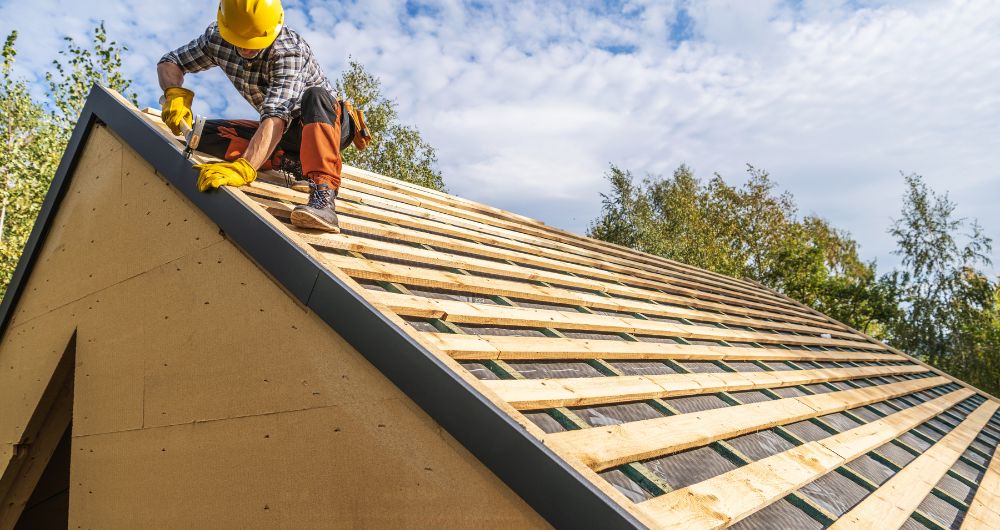
1. Safety Training and Certification
Roofing contractors undergo comprehensive safety training to ensure they have the knowledge and skills to handle roofing projects safely. This training often includes practical exercises and simulations to prepare them for real-world scenarios they may encounter on job sites.
Why Safety Training and Certification Matters
Safety training and certification are crucial for roofing contractors as they ensure adherence to industry standards and best practices, significantly reducing the risk of accidents and injuries.
- Industry-Recognized Credentials: Accredited certification programs provide roofing contractors with industry-recognized credentials. These certifications validate their expertise and proficiency in safety practices and demonstrate their commitment to professionalism.
- Risk and Accident Prevention: Roofing contractors with certifications are well-versed in safety regulations and best practices, allowing them to mitigate risks and prevent accidents on the job site. They have undergone rigorous training and examination processes to earn their certifications, which established them as trusted experts in roofing safety.
- Safety Standards: Safety training is an ongoing process for roofing contractors, with many participating in regular continuing education programs to stay updated on the latest safety standards and best practices. They attend workshops, seminars, and conferences to expand their knowledge and refine their skills, ensuring they remain at the forefront of safety excellence.
- Safety Protocols Improvement: By staying informed about industry developments and advancements in safety technology, roofing contractors can ensure optimal protection for their workers and clients. They leverage their ongoing education to implement innovative safety solutions and enhance the overall safety culture within their organizations.
2. Personal Protective Equipment (PPE)
Roofing contractors understand the critical importance of proper personal protective equipment (PPE) in maintaining the safety and well-being of their workers on job sites. PPE is the first line of defense against potential hazards and is essential for minimizing the risk of injuries and accidents.
Types of PPE Used in Roofing
Roofing contractors use a variety of personal protective equipment (PPE) to safeguard their workers against various hazards encountered during roofing projects.
- Helmets: To protect against head injuries from falling objects or impacts.
- Safety harnesses: Essential for preventing falls from heights and ensuring worker safety on elevated surfaces.
- Protective eyewear: Shields the eyes from debris, dust, and other airborne particles.
- Gloves: Offer hand protection against sharp materials, chemicals, and abrasive surfaces.
- Respirators: Protect against inhalation of hazardous substances such as fumes, dust, and airborne contaminants.
- Safety footwear: Provides traction, support, and protection against slips, trips, and falls on uneven surfaces.
Why PPE Maintenance and Replacement Matter
A key step in ensuring safety in roofing is employing the proper equipment. Regular maintenance and timely replacement of personal protective equipment (PPE) are vital in the roofing industry, as they ensure the gear remains effective in protecting workers from job-related hazards.
- Effectiveness and Longevity: Roofing contractors emphasize the importance of proper maintenance and regular inspection of PPE to ensure its effectiveness and longevity. This includes cleaning, disinfecting, and storing PPE properly between uses.
- Maximum Safety: Professional roofing contractors prioritize procuring high-quality PPE to ensure maximum protection and durability for their workers. They invest in reputable brands and equipment that meet or exceed industry standards for safety and performance.
- Safety Maintenance: Roofing contractors promptly replace PPE that shows signs of wear, damage, or degradation to maintain optimal safety standards. Regularly scheduled replacement intervals are established to ensure that PPE remains in good condition and continues to provide adequate protection.
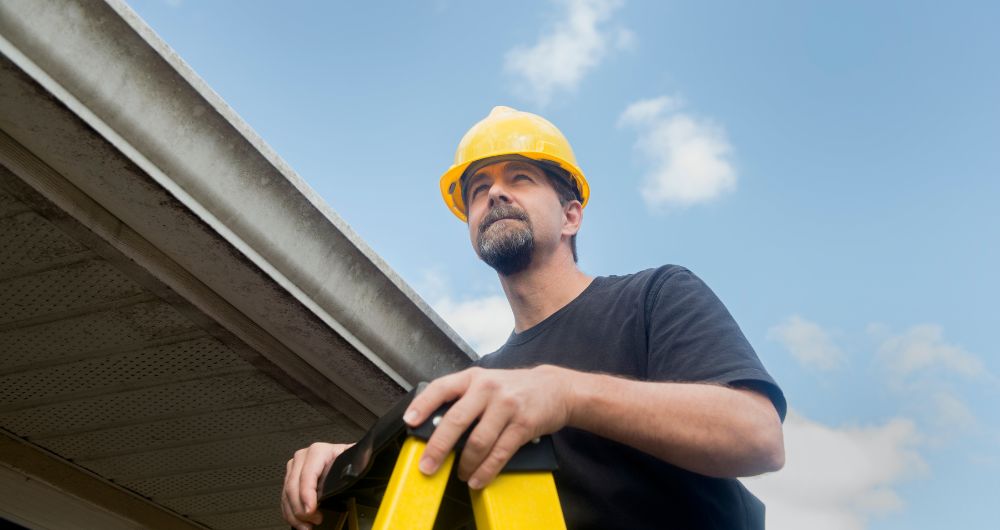
3. Fall Protection Measures
Roofing contractors are aware of the risks of falls during a roofing project, which continues to be one of the leading causes of injuries and fatalities among construction workers. These underscore the critical importance of implementing robust fall protection measures to safeguard workers’ well-being.
Types of Fall Protection Systems
Roofing contractors employ a variety of fall protection systems to mitigate the risk of falls and ensure the safety of their workers.
- Guardrails are installed along the edges of roofs and other elevated surfaces to prevent workers from accidentally stepping or falling off.
- Safety Nets are placed below work areas to catch workers in the event of a fall, reducing the risk of serious injuries or fatalities.
- Personal Fall Arrest Systems (PFAS) consist of a full-body harness, lanyard, and anchor point. They are designed to protect a worker’s fall and minimize the impact forces experienced during a fall.
- Warning Lines: Used to delineate safe work areas and warn workers of potential hazards near roof edges or openings.
Why Fall Protection Measures Matter
Fall protection measures are essential for roofing contractors because they significantly reduce the risk of serious injuries or fatalities resulting from falls, among the most common accidents in this industry.
- Ensure Compliance with Safety Regulations: Roofing contractors adhere to stringent regulations and standards established by organizations such as the Occupational Safety and Health Administration (OSHA) to ensure compliance with fall protection requirements. These regulations outline specific guidelines for designing, installing, and using fall protection systems to prevent accidents and injuries.
- Awareness of Potential Fall Hazards: Roofing contractors provide comprehensive training on fall prevention to workers. This helps increase awareness of potential fall hazards and teaches proper safety procedures.
- Safety Principles Reinforcement: Roofing contractors ensure workers are adequately trained and competent in using fall protection systems before allowing them to work at heights. Ongoing refresher training is also conducted to reinforce safety principles and address new or emerging fall hazards.
4. Hazard Communication
Clear and effective communication of hazards is paramount for roofing contractors to ensure the safety of their workers and minimize the risk of accidents on job sites. Transparent communication fosters a safety-conscious culture where workers are empowered to proactively identify and address potential hazards.
Why Hazard Communication Matters
Effective hazard communication is critical in the roofing industry as it ensures that all workers are fully informed about the potential risks and proper handling of hazardous materials on the job.
- Hazards Alert: Roofing contractors utilize various methods of communication to convey hazard information to their workers. This includes verbal instructions, safety meetings, toolbox talks, signage, and written procedures. Visual aids such as safety signs and labels are prominently displayed throughout job sites to alert workers to specific hazards.
- Hazard Identification: Roofing contractors ensure that workers are trained to identify and communicate hazards effectively. This training covers hazard recognition, hazard communication methods, and the importance of promptly reporting hazards.
- Identification of Hazards Associated with Chemicals: Roofing contractors also educate workers on reading and understanding safety data sheets (SDS) and product labels to identify potential hazards associated with chemicals and materials used in roofing activities.
5. Site Safety Inspections
Roofing contractors conduct regular site safety inspections to identify potential hazards and ensure compliance with safety regulations proactively. These inspections are crucial for maintaining a safe working environment and preventing accidents on job sites.
Strategies and Timing for Safety Inspections
Regular and strategic safety inspections are key in the roofing industry, as they help identify and mitigate potential hazards before they lead to accidents. Timing these inspections both routinely and after any significant changes or incidents ensures ongoing compliance with safety standards and reinforces a proactive approach to workplace safety.
- Daily or Weekly Inspection: Roofing contractors regularly conduct site safety inspections to ensure hazards are identified and addressed promptly. The frequency of inspections may vary depending on the size and complexity of the project, but they are typically performed daily or weekly.
- Areas of Job Site: Inspections are thorough and systematic, covering all areas of the job site, including work areas, access points, equipment, and materials storage areas. Roofing contractors leave no stone unturned in identifying and eliminating potential safety hazards.
- Documentation: Roofing contractors document the findings of site safety inspections and maintain detailed records of identified hazards, corrective actions taken, and any additional safety measures implemented. This serves as a valuable reference for tracking safety performance and ensuring accountability.
- Reporting: Depending on the severity and nature of the hazard, roofing contractors may also be required to report certain safety issues to regulatory authorities or client representatives in addition to internal documentation. Prompt reporting ensures appropriate actions are taken to address safety concerns and prevent future incidents.
Common Safety Hazards
During site safety inspections, roofing contractors commonly encounter various safety hazards that require attention and corrective action.
- Slippery surfaces due to rain, snow, or debris accumulation.
- Unsecured tools and materials which may pose a risk of falling objects.
- Electrical hazards such as exposed wiring or improperly grounded equipment.
- Uneven surfaces may increase the risk of trips and falls.
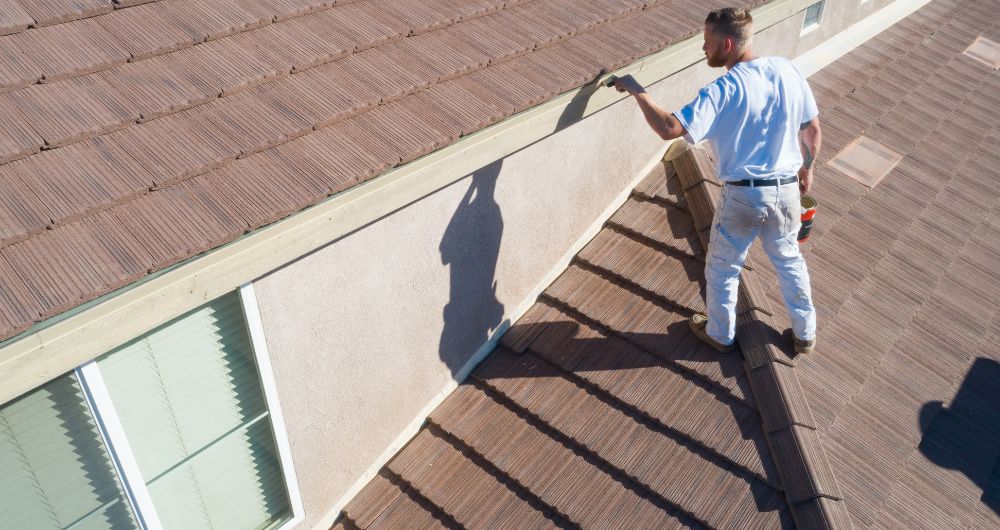
6. Emergency Response Planning
Effective emergency response planning is essential for roofing contractors to prepare for and respond to unexpected situations or emergencies that may arise on job sites. By having a comprehensive plan, roofing contractors can minimize the impact of emergencies and ensure the safety of their workers and others on site.
Components of a Response Plan
A well-developed emergency response plan for roofing contractors typically includes several key components, such as:
-
- Emergency Contact Information: Including contact details for local emergency services, medical facilities, and key personnel within the organization.
-
- Evacuation Procedures: Clearly defined procedures outlining how workers should evacuate the job site in an emergency, including designated assembly points and evacuation routes.
-
- Communication Protocols: Establishing methods for communicating emergencies to workers, clients, and other stakeholders. This can include verbal announcements, alarms, or mobile notifications.
-
- First Aid Protocols: Outlining procedures for providing first aid and medical assistance to injured workers until professional medical help arrives.
-
- Emergency Equipment: Ensuring that appropriate emergency equipment, such as fire extinguishers, first aid kits, and emergency eyewash stations, is readily available and accessible on the job site.
How Roofing Contractors Handle Emergencies
Roofing contractors are trained to respond quickly and effectively to emergencies, taking decisive actions to ensure the safety of workers and others on site.
-
- Emergency Plan Activation: Roofing contractors activate the emergency response plan and initiate evacuation procedures as necessary. They provide injured workers first aid and medical assistance, including CPR or automated external defibrillators (AEDs) if needed.
-
- Coordination with Emergency Services: Roofing contractors coordinate with emergency services and other relevant authorities to manage the situation and mitigate risks. Communicating updates and instructions to workers and other stakeholders to keep them informed and safe throughout the emergency response process.
7. Environmental Safety Practices
Roofing contractors are mindful of potential environmental hazards that may arise during roofing projects and take proactive measures to minimize their environmental impact.
Best Practices for Environmental Safety
Roofing contractors adhere to best practices for environmental safety to minimize their environmental footprint and ensure compliance with environmental regulations.
-
- Use of Environment-Friendly Materials: Roofing contractors use environmentally friendly roofing materials and products with low VOC emissions and minimal environmental impact. They implement erosion control measures, such as silt fences and sediment basins, to prevent soil erosion and runoff during construction activities.
-
- Proper Storage and Recycling: Roofing contractors properly store and handle hazardous materials, such as chemicals and solvents, to prevent spills and leaks that could harm the environment. They also recycle and reuse materials whenever possible to reduce waste and conserve natural resources.
-
- Compliance with Environmental Regulations: Roofing contractors prioritize compliance with environmental regulations and standards set forth by government agencies and regulatory bodies. Regulatory compliance includes obtaining necessary permits, licenses, and approvals for roofing projects and adhering to specific requirements for waste management, pollution prevention, and environmental protection.
-
- Environmental Impact Assessment: Roofing contractors may conduct environmental impact assessments for larger roofing projects to evaluate potential environmental risks and develop mitigation measures. These assessments help identify sensitive environmental areas, assess potential impacts, and develop strategies to minimize adverse environmental effects.
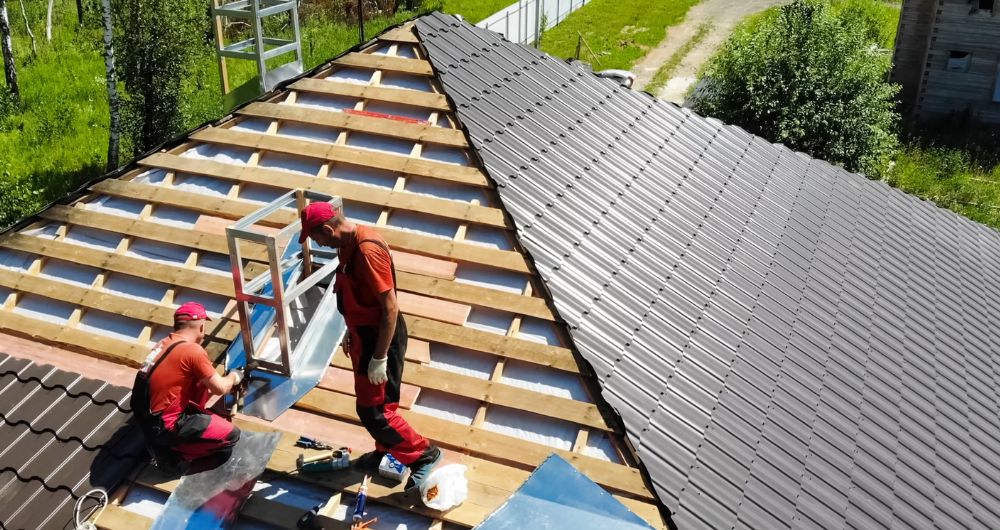
Frequently Asked Questions (FAQs)
Are roofing contractors responsible for obtaining permits for roofing projects?
Yes, in most cases, roofing contractors are responsible for obtaining the necessary permits for roofing projects. Permits are typically required for roofing work to ensure compliance with local building codes and regulations. Homeowners need to confirm with their roofing contractor who will be responsible for obtaining permits before starting the project.
What safety training certifications should I look for when hiring a roofing contractor?
When hiring a roofing contractor, it’s crucial to look for certifications such as OSHA 10-Hour and 30-Hour Training Certification, Fall Protection Training, and National Roofing Contractors Association (NRCA) Certifications. These certifications demonstrate that the roofing contractor has undergone rigorous safety training and knows industry best practices. Additionally, certifications specific to roofing systems or materials may be beneficial, depending on the project’s scope.
How can I verify a contractor’s certifications?
You can verify certifications by asking to see the actual certificates, checking expiration dates, and, if necessary, contacting the issuing organizations to confirm validity.
What should I do if I notice a safety hazard on my roofing project site?
If you notice a safety hazard on your roofing project site, it’s essential to report it immediately to the roofing contractor or their designated safety representative. Do not attempt to address the hazard yourself unless it is safe to do so and within your capabilities. Prompt reporting of safety hazards allows the roofing contractor to take appropriate corrective actions to mitigate risks and ensure the safety of everyone on the job site.
How do roofing contractors handle severe weather during a roofing project?
Roofing contractors should have an emergency response plan to address unforeseen situations such as severe weather events during a roofing project. This plan may include procedures for evacuating the job site, securing equipment and materials, and communicating with workers and other stakeholders. Homeowners need to discuss emergency procedures with their roofing contractor before the start of the project and ensure that everyone is prepared to respond effectively to emergencies.
Update and Upgrade Your Roof with Morrissey Construction Today!
Looking to transform your construction project into a seamless and successful endeavor? Morrissey Construction has decades of experience and unwavering commitment to excellence in Glastonbury, CT. We specialize in delivering top-notch construction services tailored to meet your unique needs. Whether you’re embarking on a commercial, industrial, or residential construction venture, our team of skilled professionals is dedicated to exceeding your expectations at every step. Contact us today!

 Professional roofing contractors adhere to strict safety protocols to ensure the well-being of workers and homeowners.
Professional roofing contractors adhere to strict safety protocols to ensure the well-being of workers and homeowners.